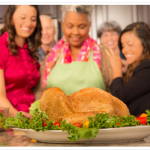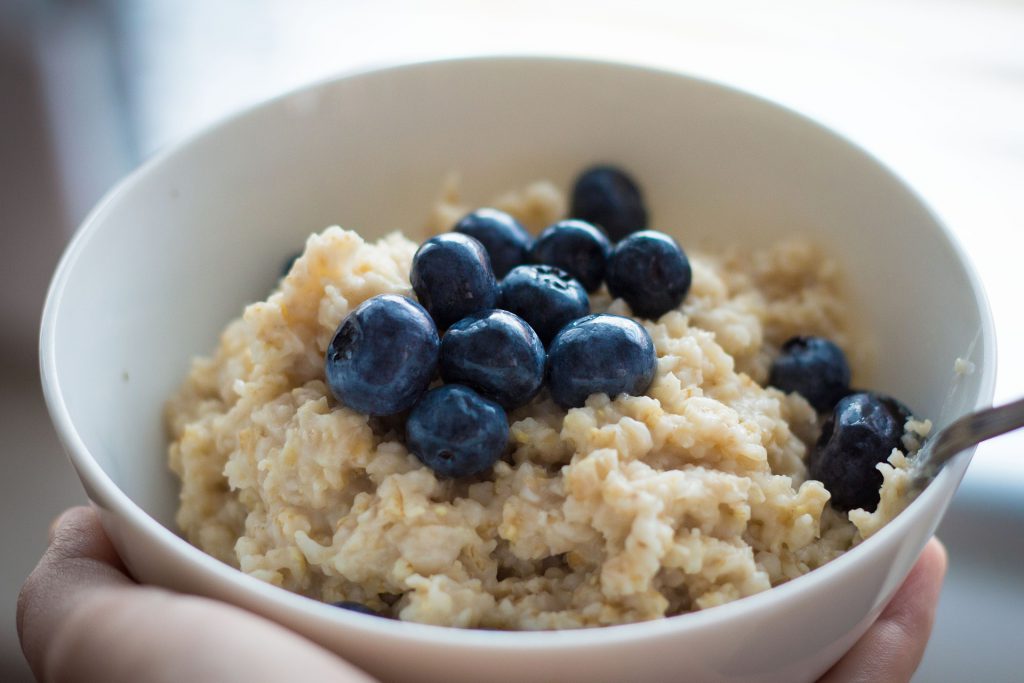Get Active and Stay Active during the Holidays!

During the holidays it can be difficult to maintain your usual workout schedule. In an effort to reach your physical activity needs try to switch it up!
If you are crunched for time try fitting in time at work during your lunch break! You could go for a brisk walk or even do chair exercises at your desk. You can also save time by incorporating your family into your workouts. Backpacking or skiing together can provide exercise while also allowing quality family time. Also try ice skating or even building a snow man to work your muscles!
If you are not able to make it to the gym try putting together some at home workouts. Body weight exercises that don’t require equipment are great for home workouts. Try crunches, pushups, lunges, or jumping jacks. You can do cardio by running up steps or jogging around your house.
Add some variety in your workouts to stay motivated. If you usually run, try biking or weight lifting. For more motivation try creating a vision board and setting realistic goals.
Although the holidays make it difficult, make exercising and reaching your physical fitness goals a top priority. Shoot for at least three thirty minute workout sessions per week.
The last and most important tip is not to overdo it. Find balance and manage your time wisely so that you can enjoy the holidays with family and friends while also getting physical activity.
Susan
Resources:
http://www.sparkpe.org
http://www.webmd.com/fitness-exercise/features/your-holiday-fitness-program#1
Stay Active to Avoid Stress
Staying active is sometimes hard to do especially if you work and have children. Our friends at the American Diabetes Association share some ideas about how physical activity is a natural stress reliever. It also helps control blood glucose levels, lower blood pressure, and provides many other health benefits. Don’t let the hustle and bustle of the holidays disrupt your exercise routine. Include time for physical activity on your calendar when you are planning ahead. We recommend doing at least 30 minutes of moderate physical activity 5 days per week.
is sometimes hard to do especially if you work and have children. Our friends at the American Diabetes Association share some ideas about how physical activity is a natural stress reliever. It also helps control blood glucose levels, lower blood pressure, and provides many other health benefits. Don’t let the hustle and bustle of the holidays disrupt your exercise routine. Include time for physical activity on your calendar when you are planning ahead. We recommend doing at least 30 minutes of moderate physical activity 5 days per week.
Finding it hard to get motivated this winter? Having a goal to work toward and exercising with others can help. Try creating an exercise challenge with your family or set an activity goal for yourself. If you’re at a loss for what to do during the colder months, check out our list of winter activity options below:
- If you’ve got snow, make a snow fort or take the family sledding. Walking up and down a hill is a great work out, and it’s a good way to get the kids active too!
- Go ice skating with a friend to catch up and get some fresh air.
- Sign up for indoor fitness classes. There are a lot of class options out there now. Try zumba, kickboxing, jazzercise, yoga, and more.
- See if any local restaurants host a salsa dancing night. Learn to salsa and get your muscles moving!
- Buy an exercise video or look for a free workout video online that you can do in the comfort of your own home.
- Hosting a holiday party? Giving the house a deep clean also counts as activity!
- Bundle up and go for a brisk walk or jog around the neighborhood.
- If you’ve got a gym membership, take advantage of the indoor equipment this winter!
- Sign up and train for a race or walk with a family member or friend. Having a race to train for in early spring can help keep you motivated.
Suzanne
Source: http://www.diabetes.org
Cook Your Turkey Safely

Improperly prepared turkey gives harmful bacteria the opportunity to grow and cause foodborne illnesses.
Although there are several ways to prepare the turkey its internal temperature should reach 165˚ Fahrenheit. This should be determined with a food thermometer. Check the temperature in the innermost part of the thigh and wing and the thickest part of the breast. Different cooking methods as well as the weight of the turkey will impact how long it will take to prepare.
If you are planning on roasting your turkey this holiday check out this link for turkey safety basics: http://www.fsis.usda.gov/wps/portal/fsis/topics/food-safety-education/get-answers/food-safety-fact-sheets/poultry-preparation/turkey-basics-safe-cooking/CT_Index and http://www.cdc.gov/features/turkeytime/
Reduce Your Holiday Stress
Is just thinking about the holidays stressing you out? As moms, we know we have the house to clean and decorate, gifts to buy and wrap, meals to plan and prepare, and money to squeeze from somewhere to support it all.

This year, to eliminate the stress and truly enjoy the holidays, follow these easy tips. Make it a family affair and you just might find the true meaning of the season! The key to it all is planning ahead.
1. Begin by creating a simple budget. Using cash only is the best way to stay within your means. Start setting aside cash well in advance. Stash a little at a time until a self-determined date. Vow to work with whatever amount is collected. When it comes time to buy food and gifts, divide what you’ve saved appropriately. Remember, food doesn’t have to be expensive to be healthy and flavorful; and gifts don’t have to be big-ticket items to be treasured. Stop the temptation to supplement your spending with credit cards by remembering the bills that will come in January. And, don’t dip into your emergency fund! You’ll pay to replace that later as well. When you use cash, your spending is over with the holidays. That’s the greatest stress relief of all!
2. To help ration your cash, make a list of all the people to whom you want to give a gift. Then, divide the list into three groups – Paid, Made and None. Knowing how much cash you’ve collected will tell you how extensive your Paid list can be and how much you can spend on each gift. Taking a good look at the time you have available will help you determine how long your Made list can be. To get inexpensive, homemade gift ideas, check the Internet. It’s loaded with creative suggestions! Lastly, those people on your None list might simply get a card into which a heartfelt note is written. What could be a more personal gift and, at the same time, better convey the true meaning of the season?
3. Start thinking about food preparation well in advance of the holidays. Ask your family to help you plan the holiday meals and decide on the baked goods they want to enjoy. If you know in advance, many of the items needed to create their favorite foods can be purchased on sale and stored safely until used. Knowing in advance also gives you an opportunity to prepare dishes and goodies that can be frozen and pulled out as needed during the season. Planning your menus ahead of the holiday crunch will not only stretch your cash budget, but your time as well. It will free you to truly enjoy the season.
When you plan ahead and work from a budget, you have the time to focus on holiday fun and truly appreciate the season. The decisions are made. All you have to do is execute them… and that’s as easy as enjoying a piece of Red Velvet cake! Happy holidays!
-Virginia
Source: http://extension.umd.edu/news/stop-seasonal-stress-holiday-spending-budget
Oats Make a Meal: How do you eat yours?

Did you know Saturday October 29th is National Oatmeal Day?
Why do we love Oatmeal? Oatmeal contains fiber, which stays in the stomach longer and helps us feel fuller, longer. This can help kids easily get through the school morning until lunchtime, help prevent overeating and help maintain a healthy weight.
Once cup of oatmeal contains only 150 calories, 4 grams of fiber, and 6 grams of protein. In addition to the fiber and protein, oatmeal is rich in thiamin, manganese, phosphorus, zinc, selenium, and iron.
There are three types of oatmeal, steel-cut oats (whole oat grain), rolled oats (also called old fashioned oats), and instant oats (most processed and frequently loaded with sweeteners). As good rule of thumb is to choose the less processed because they will have more fiber and health benefits.
Oatmeal should be a pantry staple because it’s so versatile. Oatmeal can be prepared minimalistic with just milk and honey or you can jazz it up with berries and nuts. Sprinkle some dried oatmeal to your yogurt for extra texture and fullness. Out of breadcrumbs; oatmeal can be used to crust baked chicken for dinner. Check out more ways to prepare oatmeal: http://www.healthyeating.org/Healthy-Eating/Meals-Recipes/Browse-Search-Recipes.aspx?kWord=oatmeal
To learn more about oatmeal’s history, health benefits, fiber, and ways to mix up the oatmeal bowl click here: http://www.healthyeating.org/Healthy-Eating/Healthy-Living/Weight-Management/Article-Viewer/Article/208/Health-Benefits-of-Oatmeal.aspx
Jasmine
Jasmine is an EFNEP intern.